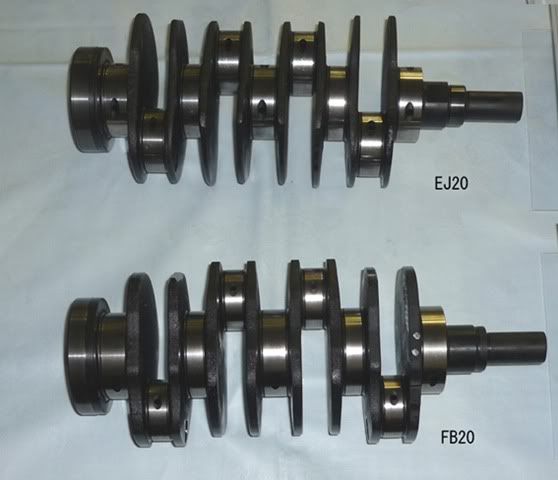Originally Posted By: Dave Sherman
I was pondering the other day. My MG has 3 crankshaft main bearings. Seems to me this was one of the weaknesses in the Triumph 1500 and early MGB engines, since this makes two crank throws that oppose each other, with nothing supporting between them. I know the 1500 is notorious for worn out thrust bearings and crank bearings. Later MGBs went to a 5 main bearing engine. Is it safe to say that most 4 cylinder engines today would have 5 mains?
Some inline 4's (like the early Austin Seven) only had a Two bearing Crank
http://173.203.80.233/media/listings/image2/2011/01/Phoenix_A7_Crank.jpg
The Triumph Crank is interesting, in that the engine was developed from an original size of 803cc.
Great effort (and little money) was spent enlarging the capacity (in the 4 cyl versions) to ultimately just under 1500cc
This involved increasing the Bores to the point where the Bore centers had to be moved into two pairs, resulting in the 1300cc version having very little land between cyls 1&2 and 3&4
But in order go to an even larger capacity (1500cc) the crank then had to be stroked.
and when doing so they decided to make the old 3 bearing crank 'Beefier' and (30lbs) heavier, and the Bearings Bigger.
Weather this was a Good Idea is debatable!
The Thrust was washer issue is another matter entirely, and has nothing to do with the # of crank bearings or size. There are 'Fixes' for this issue. (PM me if you are interested)
Interestingly, on engines like the MGB and Austin Seven where the # of main bearings have increased. Many Racers prefer to use the Older versions, with Less # of Main bearings claiming that they "Rev better"





